Menus
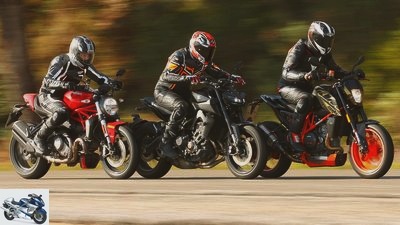
www.bilski-fotografie.de
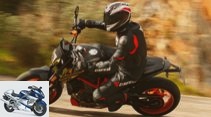
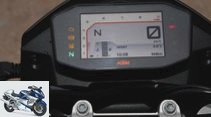


42 photos
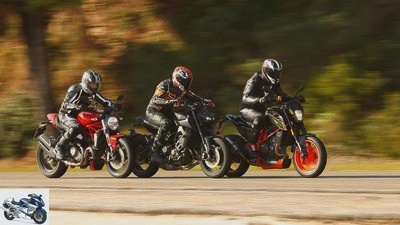
bilski-fotografie.de
1/42
Ducati Monster 1200, KTM 690 Duke R and Yamaha MT-09 in comparison
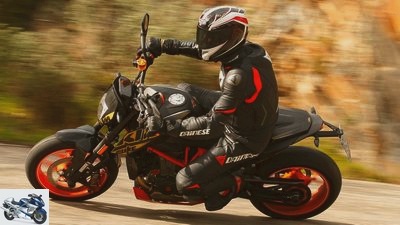
bilski-fotografie.de
2/42
At a glance – the KTM gives the impression that you can only control it with your eyes. She also wiggles very nimbly through a pattern of puddles on the asphalt
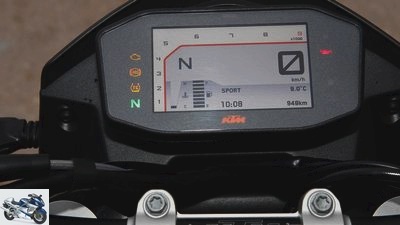
bilski-fotografie.de
3/42
The display instrument presents itself with corners and edges right down to the design of the font, which is easy to read
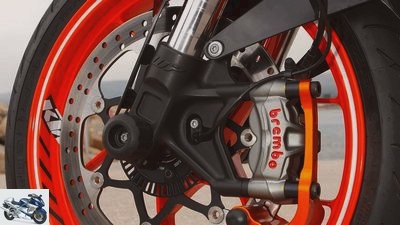
bilski-fotografie.de
4/42
The brake – here with an accessory disk lock – was the only part of the KTM that could have been more hands-on.
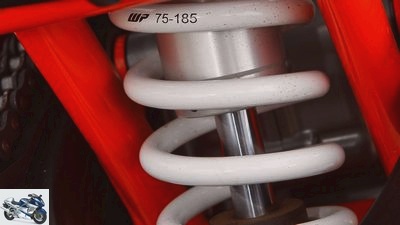
bilski-fotografie.de
5/42
As a symbol for the excellent spring elements of the KTM, here is a detail of the shock absorber including information on the spring data.
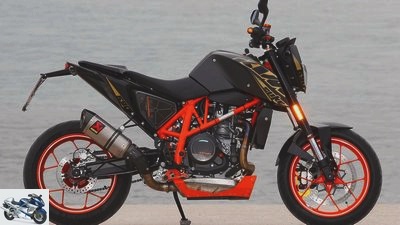
bilski-fotografie.de
6/42
So as not to arouse too high expectations: Many of the orange splashes of color come from the power parts range and cost extra. For example the front spoiler
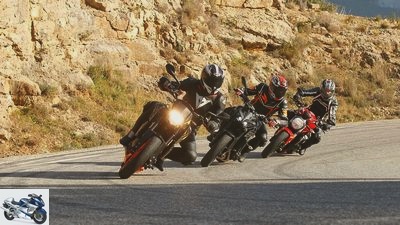
bilski-fotografie.de
7/42
Ducati Monster 1200, KTM 690 Duke R and Yamaha MT-09 in comparison
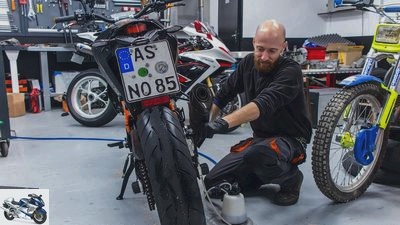
bilski-fotografie.de
8/42
With fresh brake fluid and a compressed air vent, Jean-Christophe restored the braking effect.
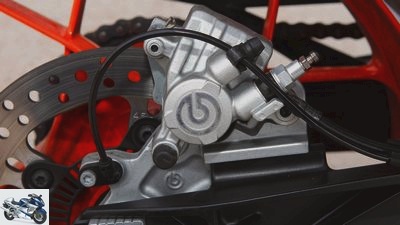
bilski-fotografie.de
9/42
The additional vent valve in the banjo bolt was not tightened
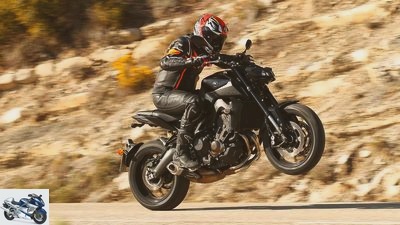
bilski-fotografie.de
10/42
Yamaha MT-09: From 5000 rpm it goes up – with the power and sometimes with the front wheel. When wheelie and traction control are turned off
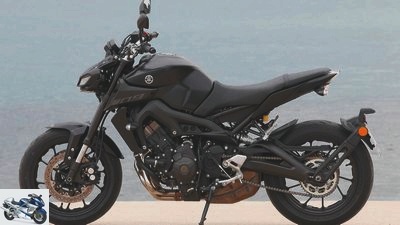
bilski-fotografie.de
11/42
Black thoughts that might arise at the sight of the standing Yamaha MT-09 vanish immediately while driving.
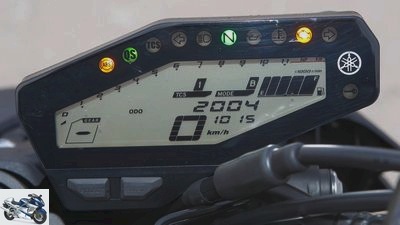
bilski-fotografie.de
12/42
Temperatures, modes, time, mileage, speed, fuel level, gear and engine speed are displayed digitally
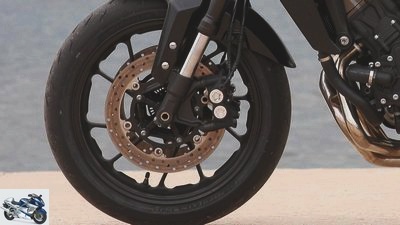
bilski-fotografie.de
13/42
The brake of the Yamaha MT-09 is a stunner: responsive, snappy and, after a short period of getting used to, also easy to adjust.
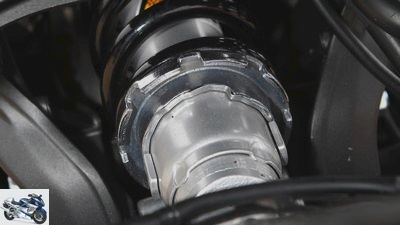
bilski-fotografie.de
14/42
The suspension strut of the MT-09 is probably only suitable for light riders. It seems overwhelmed in many situations
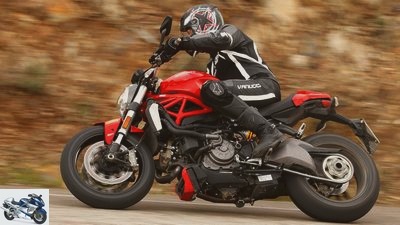
bilski-fotografie.de
15/42
Ducati Monster 1200: The 2017 model of the standard Monster has the same engine as the S. And the test motorcycle even delivered 3.5 hp more than the S.
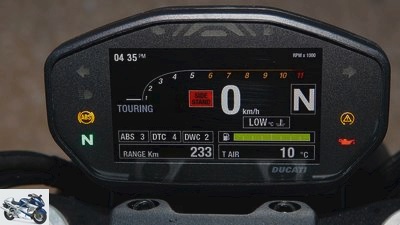
bilski-fotografie.de
16/42
The elaborate, multi-colored TFT display of the monsters is the best of the three easy-to-read instruments
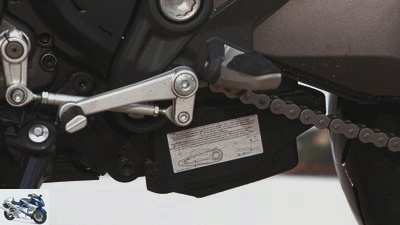
bilski-fotografie.de
17/42
The battery sits under the swing arm. As a counterweight to the tall, standing cylinder

bilski-fotografie.de
18/42
Even when the exhaust flap is fully open, the monster silencers emit a powerful but pleasant sound
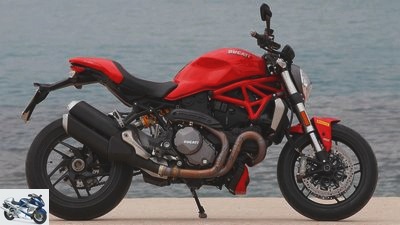
bilski-fotografie.de
19/42
At Ducati, engines serve as the supporting frame components. The Monster has a tubular space frame as a steering head support
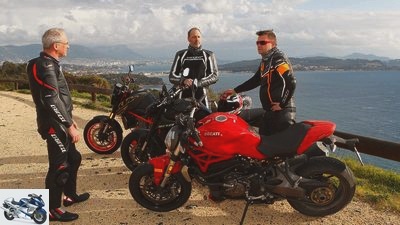
bilski-fotografie.de
20/42
Ducati Monster 1200, KTM 690 Duke R and Yamaha MT-09 in comparison
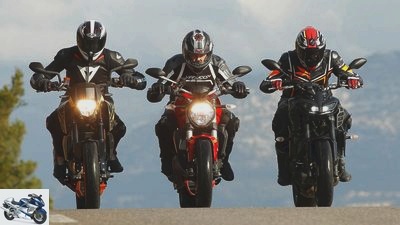
bilski-fotografie.de
21/42
Ducati Monster 1200, KTM 690 Duke R and Yamaha MT-09 in comparison
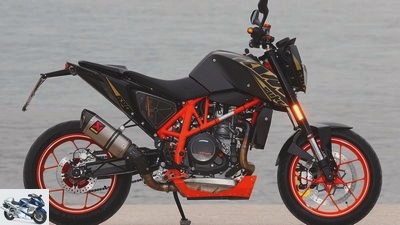
bilski-fotografie.de
22/42
Ducati Monster 1200, KTM 690 Duke R and Yamaha MT-09 in comparison
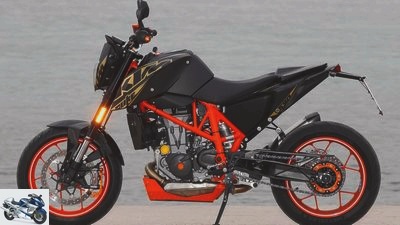
bilski-fotografie.de
23/42
Ducati Monster 1200, KTM 690 Duke R and Yamaha MT-09 in comparison
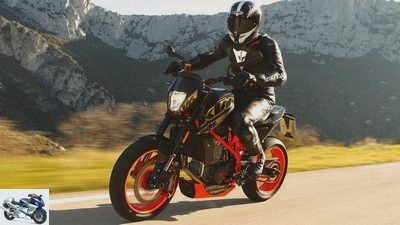
bilski-fotografie.de
24/42
Ducati Monster 1200, KTM 690 Duke R and Yamaha MT-09 in comparison
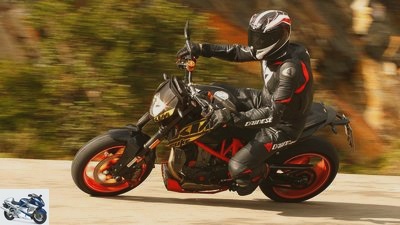
bilski-fotografie.de
25/42
Ducati Monster 1200, KTM 690 Duke R and Yamaha MT-09 in comparison
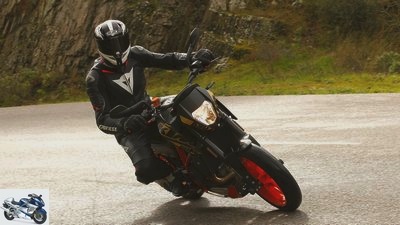
bilski-fotografie.de
26/42
Ducati Monster 1200, KTM 690 Duke R and Yamaha MT-09 in comparison
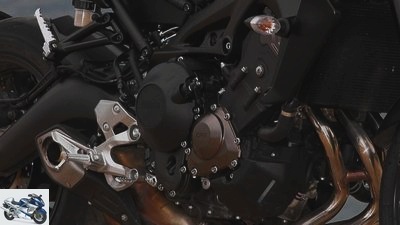
bilski-fotografie.de
27/42
Ducati Monster 1200, KTM 690 Duke R and Yamaha MT-09 in comparison
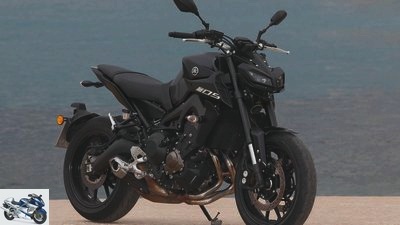
bilski-fotografie.de
28/42
Ducati Monster 1200, KTM 690 Duke R and Yamaha MT-09 in comparison
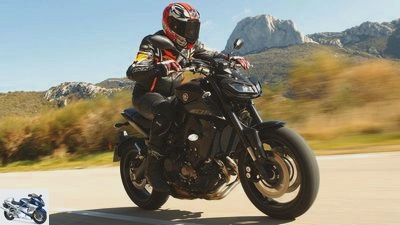
bilski-fotografie.de
29/42
Ducati Monster 1200, KTM 690 Duke R and Yamaha MT-09 in comparison
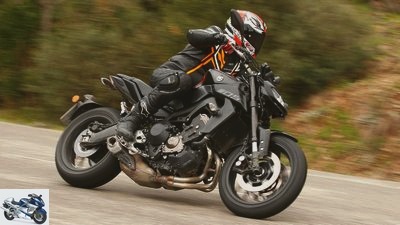
bilski-fotografie.de
30/42
Ducati Monster 1200, KTM 690 Duke R and Yamaha MT-09 in comparison
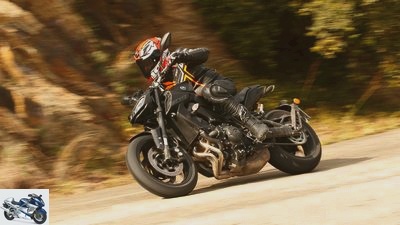
bilski-fotografie.de
31/42
Ducati Monster 1200, KTM 690 Duke R and Yamaha MT-09 in comparison
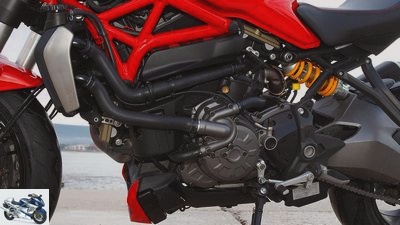
bilski-fotografie.de
32/42
Ducati Monster 1200, KTM 690 Duke R and Yamaha MT-09 in comparison
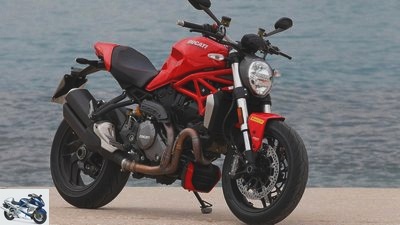
bilski-fotografie.de
33/42
Ducati Monster 1200, KTM 690 Duke R and Yamaha MT-09 in comparison
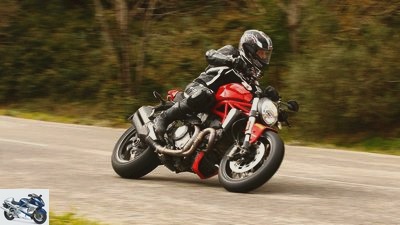
bilski-fotografie.de
34/42
Ducati Monster 1200, KTM 690 Duke R and Yamaha MT-09 in comparison
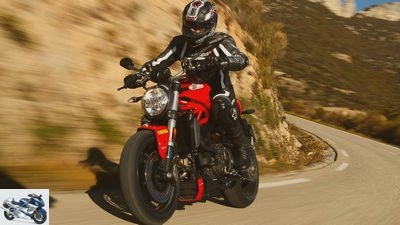
bilski-fotografie.de
35/42
Ducati Monster 1200, KTM 690 Duke R and Yamaha MT-09 in comparison
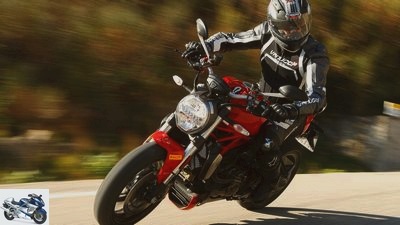
bilski-fotografie.de
36/42
Ducati Monster 1200, KTM 690 Duke R and Yamaha MT-09 in comparison
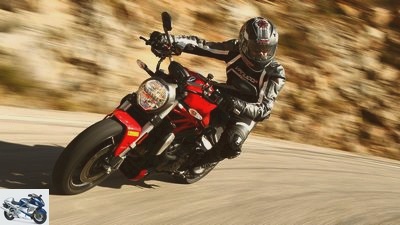
bilski-fotografie.de
37/42
Ducati Monster 1200, KTM 690 Duke R and Yamaha MT-09 in comparison
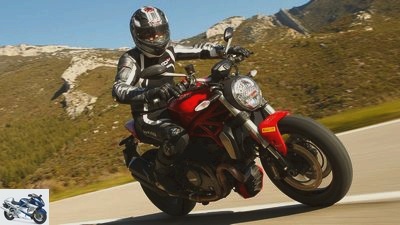
bilski-fotografie.de
38/42
Ducati Monster 1200, KTM 690 Duke R and Yamaha MT-09 in comparison
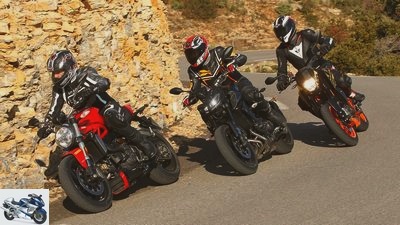
bilski-fotografie.de
39/42
Ducati Monster 1200, KTM 690 Duke R and Yamaha MT-09 in comparison
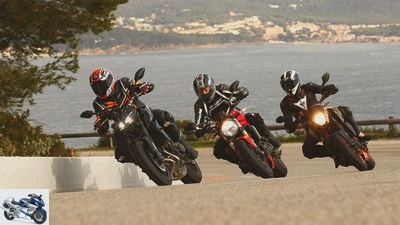
bilski-fotografie.de
40/42
Ducati Monster 1200, KTM 690 Duke R and Yamaha MT-09 in comparison
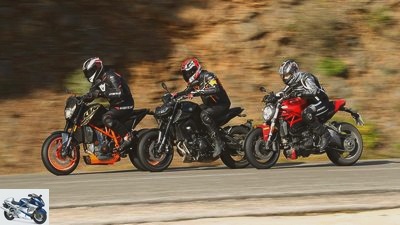
bilski-fotografie.de
41/42
Ducati Monster 1200, KTM 690 Duke R and Yamaha MT-09 in comparison
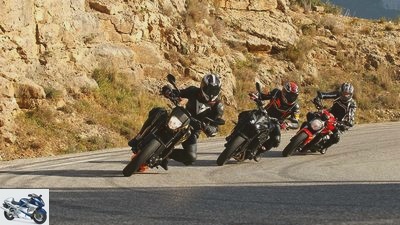
bilski-fotografie.de
42/42
Ducati Monster 1200, KTM 690 Duke R and Yamaha MT-09 in comparison
Ducati Monster 1200, KTM 690 Duke R and Yamaha MT-09 in comparison
The formula for driving fun
KTM 690 Duke R, Yamaha MT-09 and Ducati Monster 1200 – in the comparison test we are looking for maximum driving pleasure.
W.hat does an engine need to bring in order to provide as much driving pleasure as possible? At least that was what the testers agreed on: temperament. That is – it cannot be said often enough – not synonymous with high performance. It is more about the behavior of an engine in the upper half of the usable speed range, about its liveliness. If the power curve flattens out after a strong lower middle, when you accelerate you can feel how the engine is struggling against the driving resistance at the top, if it barely reaches the speed of its maximum power, then it has little temper.
Buy complete article
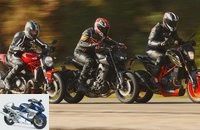
Ducati Monster 1200, KTM 690 Duke R and Yamaha MT-09 in comparison
The formula for driving fun
Video of the comparison test of the three fun bikes
The KTM single produces 78.4 hp on the crankshaft and on the MOTORRAD test bench, legal, quiet and homologated to Euro 4, and that’s no longer a minor sensation, but at least a medium one. Stronger – according to the liter output – and livelier single-cylinder are otherwise only available in Motocross and Moto3 racing machines or in track racers; but they are only for the short spurt.
Of course, the KTM single-cylinder also has to struggle with all the wow and flutter at low speeds that engines of its design simply cannot avoid. At low engine speeds under load, for example in city traffic, he occasionally unwillingly hacks on his crankshaft. What the hell? Then you switch back and let it run at higher speeds, which only seem inappropriate at the beginning. And anyway – who is seriously looking for driving pleasure in city traffic?
It is much more important that the somewhat more frequent gear changes and load changes are so easy to handle when using the KTM. And when the front wheel becomes light again and again while accelerating quickly out of a curve, those are happy moments. In any case, the author could not suppress occasional cheers of joy.
The Ducati has almost exactly twice as much engine as the KTM – twice as many cylinders, twice as much power, not quite twice as much displacement. As experienced driving dynamics already suspect, however, this does not mean that the Ducati will easily drive away from the KTM. That might be the case on an unrestricted motorway, but not on winding roads, which at least for the testers are an indispensable part of the driving fun formula – they also agreed on that. Whatever the case, what the Desmo two-cylinder does with its driver physically and mentally in narrow and very short passages of full or three-quarter load is already intense and demands the driver’s ability to concentrate and react to the utmost.
It is a distinguishing feature of the Ducati engine and it is thanks to its cubic capacity that it can not only be captivatingly spirited, but also powerful and relaxed from lower and medium speeds. He also remains very cultivated and shows greater tolerance towards low-rev driving style than the engine of the 1198 super athlete from which it comes. Tamer timing and heavier flywheels do a good job here. Using these virtues of the Ducati-V2 corresponds more to daily driving practice with its traffic law and driving physics restrictions than to constantly tickling your temper. Still, it’s nice that he has it. Driving pleasure can also arise from the mere knowledge of the potential of a motorcycle.
The three-cylinder engine of the Yamaha MT-09 is without question the most sensual engine currently being built by a Japanese manufacturer – after years of preparatory work by the three-cylinder pioneer Triumph. The fact that the Yamaha triple touches the heart, as the advertising slogan says, is not only due to the subtle roughness of its sound, which immediately casts a spell over you. When driving, this impression is strengthened when it first demonstrates smoothness and torque and then goes off like a champagne cork at the first rush to five-digit speeds.
This comparison does not apply to his acoustic performances; rather the same as the triumphant song of a hero tenor. Driving fun can also come from the acoustics of the driving, which does not have to be roaring loud. As the MT-09 impressively proves. The only question is how this factor is to be incorporated into the formula.
In the performance curve only as a slight kink, in the torque curve already more pronounced, the Yamaha three-cylinder writes its revving and willingness to perform in the test stand log. If curve follows curve and the throttle has to be turned up and down frequently, the B mode of the engine control is recommended as with the previous version of the MT-09 because of the smoother load changes. As already described in the comparison test with the MV Brutale, the new MT-09 also showed no performance differences between standard, A and B mode on the test bench; this can therefore confidently be activated permanently. Unless a stubborn hardcore sports driver finds his fulfillment in making the constant transition from load to push mode and back again more choppy and more difficult than necessary.
As far as the share of engines in the driving pleasure formula is concerned, this story has already reached the end of classical mathematics. Because regardless of whether one, two or three is used for the variable of the number of cylinders, the results do not differ in terms of quantity. You just have to be ready to discover the charm of the individual qualities of each engine, then you will have the same amount of driving fun with each of the three engines described. But what about the chassis? What part do they have?
It must be stated in advance that the Yamaha was not on the road on its series tires. After the test in MOTORRAD 3/2017 and another use by our colleagues from PS, the Bridgestone S 20 in specification M were no longer the freshest and the temptation to try a different pairing was great.
The choice fell on the new Michelin Power RS 2CT +. The new front tire is likely to have the largest part in the fact that the MT-09 turned more easily and held the line more precisely than with the production tire. It could no longer be set in rocking movements to the same extent as before by bumps in the sloping position. Nevertheless, the Michelins can’t work miracles either, after all, the MT-09’s original spring elements remained. And their soft coordination was emphasized even more by the strong leadership, excellent adhesive tires. The hindquarters punctures more often, and in deep, not yet extreme lean angles, the front wheel begins to tremble up and down, tentatively but noticeably. This forces the driver to moderate his urge to lean. He just doesn’t want to risk the tremors growing into solid chattering with a subsequent front wheel slide. On the one hand, one has to admit to Yamaha that the phenomena described only occur with a decidedly sporty driving style – and a high degree of driving pleasure – on the other hand, the temperatures were mostly in the single-digit range in this comparison too; Even a maximum temperature of 15 degrees in the early afternoon would be perceived as quite cool in summer. So it remains to be seen how the damping of the Yamaha spring elements will behave at disproportionately higher summer temperatures, when the oil is even thinner. If the cost factor is included in the individual driving fun formula of an MT-09 fan, we would like to point out its low price. It leaves a lot of financial leeway for a revision of the fork and shock absorber.
At 8,995 euros, the Yamaha is even cheaper than the KTM. The basic price of the nimble single-cylinder machine including the Akrapovic exhaust, which is standard equipment on the R, is 10 395 euros. That is painfully expensive, but also includes spring elements of excellent quality and coordination. One can only hope that a similarly well-working spring mechanism is used in every 690 Duke R. In combination with the low weight, the narrow rear tire and the successful chassis geometry, the hydraulically tightly damped and mechanically smooth-running WP parts of the KTM give the KTM impeccable handling. Only those who are looking for as much suspension comfort as possible could find fault with the set-up, but the entire motorcycle is not made for such needs.
How are the chassis qualities of the KTM expressed? Well, at first with a wonderful ease of turning and changing lean angles. Furthermore, in the homogeneity with which it emerges down to deep inclines and then again. There is neither annoying resistance nor frightening wobbly. And when it goes over pronounced bumps in a brisk ride, the suspension irons most of it, except for a short, dry suspension reaction.
The behavior of the KTM in a very specific, selective right-hand bend at Col de l’Espigoulier, which was not the only test track for this story, but an indispensable test track is also exemplary. The said curve is very tight at the entrance, but then pulls the radius wider and wider. Anyone who knows them drives them on the KTM in second gear, pulls up early and accelerates sharply in a constant lean angle through to fourth. To feel how the KTM’s rear suspension braces itself against the rear wheel load, which increases with acceleration, and how unmoved it can handle the two shifts is a real pleasure.
Especially in comparison with the other two motorcycles. The MT-09 is mainly fighting with its hindquarters, and the Ducati shows, at least in part, a slightly strange peculiarity of earlier monsters: stimulated by the slight steering impulses that accompany every motorcycle ride, it rocks a little around the longitudinal axis. Mostly just very easily, but constantly. A little more when shifting gears in an inclined position or pronounced bumps that hit your front wheel, and significantly less when pulling evenly on flat asphalt. This is surprising because the recently tested (MOTORRAD 3/2017) Monster 1200 S showed nothing of this behavior despite the same frame, the same chassis geometry and the same tires.
Whatever the cause of the difference, it is advisable to keep the air pressure of the front tire at 2.5 bar or even a tad higher and not to follow the invitation of the handlebar mounted far in front too far. It tempts you to put a lot of weight on the front wheel. Sure, smaller drivers can only withstand this up to a certain point, but it is still better to sit back a little and guide the monsters with a light hand. The driver initiates quite a few of the minimal disruptive influences into the steering himself. It just doesn’t work without it. And there are motorcycles that handle it more calmly than the test machine.
As has already been indicated several times and the following, strictly subjective conclusions of the three testers, the world formula for driving fun could not be found on this research trip to the motorcycle paradise of southern France. In return, there were a few phenomena that would enter this formula as a zero sum or even with a minus sign, regardless of the personal taste and driving style of the testers. On the one hand there is the Yamaha shift assistant, which no longer works every time you try to shift gear without the clutch. Furthermore, the clutch itself, which after the acceleration measurements and – it cannot be denied – some wheelies when starting up sharply, could no longer be dosed as cleanly as when it was new, but occasionally pulled.
The mishap with the KTM’s rear brake has already been described earlier, but the numerous power parts that adorn it deserve special attention. They cost a total of around 2500 euros – official prices were not available from KTM at the time of going to press, the prices of two dealers differ slightly. A brittle carbon fiber wing covering the cooler costs 96.60 euros in the office, which makes 193.20 euros for both sides of the cooler. Few parts of the package, most likely perhaps the foldable levers at 164.90 euros each, serve something other than the beautiful appearance, none of them benefit driving fun. A standard 690 Duke R donates it in abundance.
The testers’ conclusions
Suspicious readers don’t have to believe it, but it was actually not agreed that each of the three testers would choose a different motorcycle as their favorite driving pleasure. On the contrary: the controversial discussions and different preferences gave rise to the idea of giving three subjective assessments instead of an editorial conclusion.
Ralf Schneider, author with new experiences on the subject of single-cylinder
At first I didn’t want to ride the KTM for photos. But as the only one who knew the French word for brake fluid, I had to take it to be repaired. After that, I didn’t want to get down again. The lively, very well coordinated Duke R gives me a wonderful ease of driving.
Stefan Gluck, tester, let the Ducati Monster 1200 run quickly
The agile KTM is a lot of fun on winding mountain roads. But only there. The Yamaha is also a source of joy, but too easy to implement for a dream bike. The Monster combines the exoticism of the KTM with the everyday suitability of the Yamaha, their super strong, cultivated V2 is simply awesome. But so is your price.
Tobias Wassermann, fleet manager, fell in love with the Yamaha MT-09
The engine is the strong heart of the Yamaha. When the three-cylinder roars and tears, I’m entranced. I also like the seating position on the MT, and I think its brakes are gigantic. I notice that the fork and shock absorber are too softly sprung and underdamped, but I don’t mind. I always stay in control of the situation.
Related articles
-
35 photos 1/35 BMW S 1000 R, Ducati Monster 1200 S, KTM 1290 Super Duke R and Triumph Speed Triple R in comparison test….
-
BMW R 1200 R and Ducati Monster 1200 in a comparison test
Gargolov 30th photos Gargolov 1/30 Ducati Monster 1200 and BMW R 1200 R.. Gargolov 2/30 … modern headlights, … Gargolov 3/30 Ducati Monster 1200 and…
-
BMW R 1200 R Classic and Ducati Monster 1100 Evo in comparison
Jahn 18th photos Jahn 1/18 The BMW R 1200 R Classic and the Ducati Monster 1100 Evo will both still be powered by air / oil-cooled engines, i.e. real…
-
Ducati Monster 1200 S in the top test
www. 33 photos 1/33 2/33 Noticeable negatively: When folding up, the tank gets stuck at the front, so the hinge at…
-
Ducati Monster 1200 R in the top test
www.bilski-fotografie.de 23 photos 1/23 Power on the crankshaft. Measurements on Dynojet roller test stand 250, corrected according to 95/1 / EG, maximum…
-
Ducati Monster 821 and Monster 1200 in comparison test
fact 12th photos fact 1/12 fact 2/12 … The 1200 offers more of the same, and that with a sovereign chassis and delicious details. fact 3/12 The 821…
-
Comparison test Ducati Monster 821 Stripe, MV Agusta Brutale 800 and Yamaha XSR 900
r-photography.info 45 photos 1/45 Yamaha XSR 900. 2/45 MV Agusta Brutale 800. 3/45…
-
Ducati Hypermotard 939, Yamaha MT-09 and Aprilia Dorsoduro 900 in comparison test
Arturo Rivas Ducati Hypermotard 939, Yamaha MT-09 and Aprilia Dorsoduro 900 Funbikes in comparison test Seriously: fun and common sense are often…
-
Yamaha MT-09 and MV Agusta Brutale 800 in comparison test
bilski-fotografie.de 16 pictures bilski-fotografie.de 1/16 MV Agusta Brutale 800 and Yamaha MT-09. www.bilski-fotografie.de 2/16 Typical MV: Hybrid frame …
-
Comparison test BMW K 1200 RS against Ducati 944 ST2 against Honda VFR
Comparison test BMW K 1200 RS against Ducati 944 ST2 against Honda VFR Three just in case Three motorcycles, three different concepts, one requirement:…